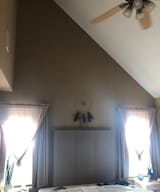What Kind Of Foam Is Used For Soundproofing?
Share
The best kind of foam for soundproofing is closed-cell foam. A common misconception is open-cell foam like acoustic foam is ideal for soundproofing, which is not the case.
Closed-Cell Foam Vs Open-Cell Foam
The main difference between closed-cell foam and open-cell foam lies in their cellular structure, which affects their physical properties and applications. Both foams have little bubbles throughout but differ in a few ways.
| Closed-Cell | Open-Cell | |
| Cell Structure | Closed | Open |
| Density | More Dense | Less Dense |
| Flexibility | Less Flexible | More Flexible |
| Moisture Absorption | Resistant To Moisture | Will Absorb Moisture |
| Insulation Properties | Better Insulation | Good Insulation |
| Sound Blocking | Best Option | Not The Best |
The cells, or bubbles, in closed-cell foam are fully sealed off from each other. The foam is more rigid and has a compact structure with a high density of cells.
Examples of closed-cell foam include Polyethylene Foam, Polystyrene Foam (styrofoam), and Neoprene Foam.
The cells in open-cell foam are interconnected, allowing air, water, or other substances to move through the foam. The structure is more porous and less dense compared to closed-cell foam.
Examples of open-cell foam include Acoustic Foam, Memory Foam for mattresses, and Melamine Foam.
Open-cell foam does have it's use in acoustics. It is a great sound absorber and can clear up the sound within a room very well. It is just not the best sound blocker.
How Does Foam Block Sound?
Foam blocks sound by creating a barrier so the sound waves cannot physically make it through your wall or ceiling.
Dense foam can be added to a wall or ceiling's surface to help block the sound. The material acts as a sound barrier and can significantly reduce noise transmission.
Below are some common types of dense closed-cell foams that are used.

In between the studs in the wall it is ideal to use insulation. Fiberglass and mineral wool are popular choices.
What Is The Best Way To Soundproof?
So we know that certain types of foam can be used to help block sound from coming through a wall, but what's the best way to construct the wall for optimum sound blocking?
Double Wall with Air Gap
Constructing a double wall with an air gap in between is one of the most effective ways to soundproof a wall. This involves building two separate layers of wall with a gap in between them, which decouples the layers and reduces sound transmission. You can fill the gap with acoustic insulation for better results.
Resilient Channels or Hat Channels
Install resilient channels (also known as hat channels) or acoustic clips on the existing wall studs before attaching the drywall. These channels separate the drywall from the studs and help minimize sound transmission through vibrations.
Add Soundproof Layers + Drywall
Use soundproof material that is specially designed to block sound. It has a higher mass and better sound-absorbing properties than regular drywall.

In between the studs you will want to add additional insulation. The best soundproofing insulation for inside the studs depends on various factors, including your specific needs, budget, and the existing structure of your walls. Here are some common soundproofing insulation options:
Fiberglass Insulation: This is a widely used insulation material that can help reduce sound transmission. It's relatively affordable and readily available.
Mineral Wool Insulation: Mineral wool, also known as rock wool or slag wool, is dense and effective at blocking sound. It can be a good choice for soundproofing walls.
Cellulose Insulation: Made from recycled paper and treated with fire-retardant chemicals, cellulose insulation can be blown into wall cavities, providing good soundproofing properties.
Check out our soundproofing foam HERE!











